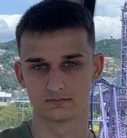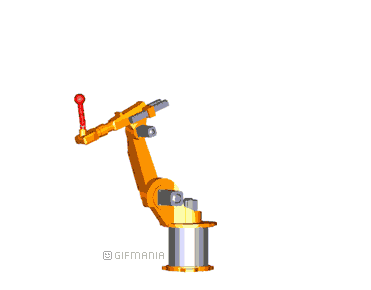
1.1 Stages of development of a fuzzy project
Recently, fuzzy technology has been gaining more and more supporters among control system developers. Having started in 1965 from the works of Professor Lotfi Zadeh, over the past years fuzzy logic has rapidly gone from an almost anti-scientific theory, practically rejected in Europe and the USA, to the banal situation of the late eighties, when fuzzy razors appeared in a wide range in Japan, vacuum cleaners, cameras. The term fuzzy itself has become so firmly established in life that it simply cannot be translated in many languages. However, such a large-scale leap in the development of fuzzy systems is not at all accidental. The simplicity and low cost of developing fuzzy control systems is forcing designers to increasingly resort to this technology
Fuzzy logic is a technology for developing control systems, which is based mainly on the intuition of an expert (operator) and the experience of an engineer. It uses elements of everyday language to describe the behavior of a system, as opposed to the complex mathematical description of conventional model-based system design, allowing it to be used to build robust control systems for very complex objects.
Fuzzy logic is best used in the following cases:
• when it is difficult or impossible to construct an adequate mathematical model for the task;
• if there are a large number of parameters, including nonlinear or time-dependent ones.
It is important to remember that fuzzy logic is not a panacea for all ills. It is well known that classical control methods work well with a completely deterministic control object and a deterministic environment. For systems with incomplete information or high complexity of the control object, the use of fuzzy logic is most successful. Developing a system based on fuzzy logic comes down to working with an expert - technologist in the proposed field[1]. If there is practical experience about the nature of the process and the interaction of all significant parameters, then fuzzy logic introduces new functionality into the existing development process. At the same time, the development cycle of the entire system is significantly reduced when using advanced tools development support. The development of systems with fuzzy control logic consists of four steps:
1. Formalization of the task: definition of variables, comparison of verbal descriptions with specific physical values.
2. Development of a rule base that defines a control strategy for inputting fuzzy rules and specifying a defuzzification method for output data.
3. Optimization of the developed system in the mode of interactive analysis of the system behavior using previously prepared data or using a program model of the control object.
4. Real-time optimization with connection of the created control system to a real object and optimization of various system components in real conditions.
Classical logic has been developing since ancient times. Aristotle is considered its founder. Logic is known to us as the most theoretical and exact science.
At the same time, classical or Boolean logic has one, but very significant drawback - with its help it is impossible to describe human associative thinking[2].
Classical logic operates only with two concepts “True” and “False”, excluding any intermediate values.
Fuzzy logic is designed to solve this problem. The term "linguistic variable" can be associated with any physical quantity for which it is necessary to have more than one value. "Yes and no". In this case, the required number of characteristics is determined and each of them is assigned a specific value of the physical quantity being described.
The membership function indicates the degree to which a given physical quantity belongs to a certain pre-established set (linguistic variable) in the range under consideration. Degrees of membership are combined using the appropriate operator. Most often, in regulation problems with fuzzy logic, AND and OR operators are used to process linguistic variables.
Hard coupling using the AND and OR operators may, in some cases, produce insufficiently accurate results. A more flexible operation can be obtained by allowing some compensation of one value (linguistic variable) by another. This can be achieved by using the GAMMA operator. It shows to what extent compensation is made. When ᵞ=1, the GAMMA operation degenerates into an AND operation, and when ᵞ=0 - into an OR operation.
1.1 Stages of development of a fuzzy project
When designing control systems built on the basis of fuzzy logic theory, a so-called fuzzy project is developed, the block diagram of which is shown in the figure. The data flows in this figure show that fuzzification and defuzzification are directly related to the user. From fuzzification, information passes through logical processing to defuzzification[3].

Drawing 1 - Fuzzy Project Structure
Main tasks of fuzzification:
• check fuzzy ranges for validity;
• display clear input data (measured quantities) in the form of fuzzy ranges;
• provide the result for logical processing.
According to the figure, data for logical processing comes from fuzzification in the form of already specified fuzzy ranges.
The rules contain the expert’s knowledge of what to do if one of the properties specified in fuzzification becomes true.
Logical processing tasks:
• read input data;
• read the rules;
• process parts of the "IF" rules;
• combining the results using operators, obtain intermediate results;
• convert intermediate results into fuzzy output activity using operators;
• provide the result for defuzzification.
Defuzzification tasks:
• transform fuzzy data (fuzzy data) into a clear value;
• make the result available to the user.
The input data for defuzzification is fuzzy data coming from logical processing. Defuzzification solves problems that are inverse to fuzzification problems. However, checking the ranges is not required here, because there is no outside influence, and logical processing provides obviously correct data. Having fuzzy ranges, it is necessary to obtain a clear result that is understandable to the computer and the user.
Fuzzification serves to present a fuzzy characteristic of a clear state of a variable in a form understandable to a computer. Let's consider how the value of some measured variable (fuzzy variable) can be described using fuzzy ranges. Ranges in fuzzy logic are denoted as a term or a fuzzy set. They are depicted using triangles, trapezoids or other curves - this is a membership function or a form of a term[4]. The evaluation coefficient is called the degree of membership and takes values from 0.0 to 1.0.
One hundred percent membership is denoted as 1.0, fifty percent membership as 0.5, etc. If the terms intersect, then one value of the input variable corresponds to several degrees of membership. They form many degrees of membership. To ensure unambiguous phasification of the phase-variable state, you should always try to make intersections of adjacent terms and eliminate gaps between them. For this reason, the first and last fuzzy terms are most often chosen in the form of trapezoids.
Thus, a fuzzy object is characterized by:
• fuzzy variable name;
• domain of definition of the phase variable;
• terms;
• term boundaries;
• set of degrees of membership;
• form of terms.
The result of fuzzification of the input fuzzy variable is a list of accessories, which is passed to the logical processing block as a list of input parameters. Logical processing activates the terms of the output fuzzy variable in accordance with the specified fuzzy rules. In this case, there can be several input and output fuzzy variables[5].
The operating algorithm of fuzzy systems can be divided into three parts: fuzzification, logical processing of rules and defuzzification The task of defuzzification is the reverse transformation of linguistic terms into physical meanings[6].
There are several defuzzification methods:
• Minimum method
The value of the linguistic variable is taken as the output value.
• Maximum method
The value of the largest linguistic variable is taken as the output value.
• Gravity method
The center of gravity of the area of the output membership function is calculated quantity formed by all linguistic variables.
• Height method
Is a simplified gravity method and, reducing time calculations, gives minor deviations from the gravitational method.

Drawing 2 - Defuzzification Methods
In automation technology, it is advisable to use those phasification methods that are the fastest and require the least amount of memory. The choice of one method or another is determined both by the characteristics of the problem being solved and by the experience of the designer. In conclusion, it should be noted that “fuzzy” as a method of processing fuzzy information is initially based on the fact that the form of membership functions is important only for input variables. For output variables it is of secondary importance. The vagueness lies in the initial data, and the result, determined on their basis through their evaluation or, in other words, weighing, is unambiguous[7].

Drawing 3 - Animation of input and output signals in phase logic
1. Volosenko, S. Introductory chapter: Basic properties of fuzzy relations in fuzzy logic; IntechOpen: London, UK, 2020; pp. 3-10.
2. Pegat, A. Fuzzy modeling and control / A. Pegat. - M.: BINOM. Knowledge Laboratory, 2013. - 800 s
3. Fuzzy logic with engineering applications / Timothy J. Ross - John Wiley & Sons, Ltd., 2004. - 628 p.
4. Merabet, A. Advanced control of electric drives: current problems and future prospects. Electronics 2020.
5. Shtil V.Ya.; Varga T.; Bensic T.; Barukchich M. Review of fuzzy algorithms used in the control of multi-engine systems. Electronics 2020
6. Vishnevsky, V. I. Adaptive sliding fuzzy mode of speed control of an asynchronous electric motor / V. I.
7. Lee, L.; Sun, Y. Adaptive fuzzy control for nonlinear uncertain fractional order systems with unknown uncertainties and external disturbances. Entropy 2015